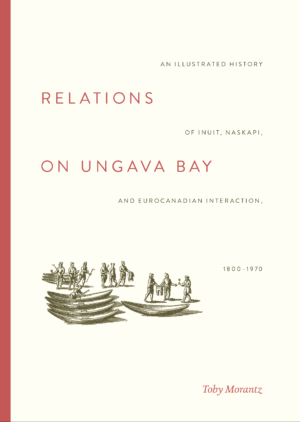Search Results: Returned 10 Results, Displaying Titles 1 - 10
-
-
1987, c1986., Listen for Pleasure Call No: AC 971.2 N5545c Edition: Abridged / Penny Williams. Availability:1 of 1 At Your Library
-
-
1989., Viking Studio ; Madison Press Books Call No: 971.201 N5545e Availability:1 of 1 At Your Library
-
-
2015., Adult, Great Plains Publications Call No: IND Bio F593f Availability:1 of 1 At Your Library Summary Note: "This is a story about the fur trade and First Nations, and the development of northern Canada, seen and experienced not only through Leonard Flett's eyes, but also through the eyes of his father, grandfather, and great-grandfather.The lives of indigenous people in remote areas of northern Ontario, Manitoba and Saskatchewan in the 1960s and 1970s are examined in detail. Flett's successful career with both the Hudson's Bay Company and the North West Company provides an insight into the dying days of the fur trade and the rise of a new retail business tailored to First Nations."--From publisher.
-
-
2015., Adult, ECW Press Call No: 599.37 B126o Availability:1 of 1 At Your Library Summary Note: "Beavers, those icons of industriousness, have been gnawing down trees, building dams, shaping the land, and creating critical habitat in North America for at least a million years. Once one of the continent's most ubiquitous mammals, they ranged from the Atlantic to the Pacific, and from the Rio Grande to the edge of the northern tundra. Wherever there was wood and water, there were beavers -- 60 million (or more) -- and wherever there were beavers, there were intricate natural communities that depended on their activities. Then the European fur traders arrived. Frances Backhouse examines humanity's 15,000-year relationship with Castor canadensis, and the beaver's even older relationship with North American landscapes and ecosystems. From the waterlogged environs of the Beaver Capital of Canada to the wilderness cabin that controversial conservationist Grey Owl shared with pet beavers; from a bustling workshop where craftsmen make beaver-felt cowboy hats using century-old tools to a tidal marsh where an almost-lost link between beavers and salmon was recently found, Backhouse goes on a journey of discovery to find out what happened after we nearly wiped this essential animal off the map, and how we can learn to live with beavers now that they're returning. Frances Backhouse is the author of Children of the Klondike. She lives in Victoria, B.C. and teaches creative nonfiction at the University of Victoria"--Provided by publisher.
-
-
2010., Avataq Cultural Institute Call No: IND 971.41 M829r v. 1 Edition: First edition. first printing. Availability:1 of 1 At Your Library Summary Note: “Vanishing races” was how bureaucrats and academics in the south throughout most of the 20th century viewed the people of the north. The Inuit and Crees of the southeastern Hudson Bay coast would have been included in this category because important food resources such as beluga whales, caribou and beaver were depleted in the early part of the century. Despite this and the many other significant changes that took place in the wake of European contact, the Inuit and the Crees found ways to adapt. In fact, the first two decades of the 1900s were very prosperous years for both groups, as they were for the English and French companies whose fur trade posts quickly dotted the coastline. More recent government involvement in administration of the region and the entry of the military were further grave challenges to the way of life and wellbeing of the Inuit and Crees of southeast Hudson Bay.
-
-
2016., Avataq Cultural Institute Call No: IND 971.41 M829r v. 2 Edition: First edition, first printing. Availability:1 of 1 At Your Library Summary Note: For hundreds of years, if not millennia, the Inuit and Naskapis relied on the food resources of the Ungava Peninsula. The Inuit focused their sights on the coastal marine life but also turned inland to hunt caribou. It was these vast migratory caribou herds that brought the Naskapis into the region from their forested base further south. The two peoples maintained their subsistence patterns until competition in the European fur trade disrupted their way of life. Despite the dangerous tidal currents, the Hudson’s Bay Company established and outfitted a series of posts ringing the coast, beginning slowly from the first few decades of the nineteenth century. Initially the Company’s commercial interest was the salmon fishery but the fur coat fashion of the early twentieth century and fierce fur trade competition spiralled the arctic fox and related species to valuable commodities. Both Inuit and Naskapis prospered until the Crash of 1929. The combined disappearance of caribou and fur markets ushered in a period of great poverty, only to be eased somewhat with the arrival of the U.S. Air Force base at Fort Chimo. Reluctantly and by degrees, the federal government began taking charge, providing new challenges to Inuit and Naskapis in their struggles to protect their culture and autonomy.













